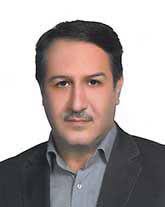Modeling Structural Equations of Thought/Action Fusion, Cognitive Beliefs, Mindfulness, and Experiential Avoidance with Symptoms of Obsessive-Compulsive Disorder in a Non-Clinical Population
Keywords:
Cognitive Beliefs, Thought/Action Fusion, Mindfulness, Experiential Avoidance, Obsessive-Compulsive Disorder SymptomsAbstract
Objective: This study aimed to examine the structural relationships between thought/action fusion, cognitive beliefs, mindfulness, and experiential avoidance with symptoms of OCD in a non-clinical population.
Methods and Materials: The research design was descriptive-correlational. The statistical population of this study included all university students in Tabriz. A sample of 500 individuals was selected using convenience sampling. The research instruments included the revised Obsessive-Compulsive Inventory, the Thought/Action Fusion Scale, the Obsessive Beliefs Questionnaire, the Mindfulness Attention Awareness Scale, and the Acceptance and Action Questionnaire (second version). Pearson's correlation coefficient and structural equation modeling were used to analyze the research hypotheses. Data analysis was performed using SPSS version 25.
Findings: The statistical analysis results indicated that the combination of cognitive beliefs, mindfulness, and experiential avoidance variables could predict the symptoms of washing, obsession, hoarding, order, checking, and neutralizing symptoms of OCD (p < .05).
Conclusion: Based on the results, it can be inferred that professionals can utilize the potential of the studied variables in the areas of diagnosis and clinical interventions for OCD.
Downloads

Downloads
Additional Files
Published
Submitted
Revised
Accepted
Issue
Section
License
Copyright (c) 2024 Rozna Asgharnezhad (Author); Marziyeh Alivandi Vafa (Corresponding Author); Reza Abdi (Author)

This work is licensed under a Creative Commons Attribution-NonCommercial 4.0 International License.






















